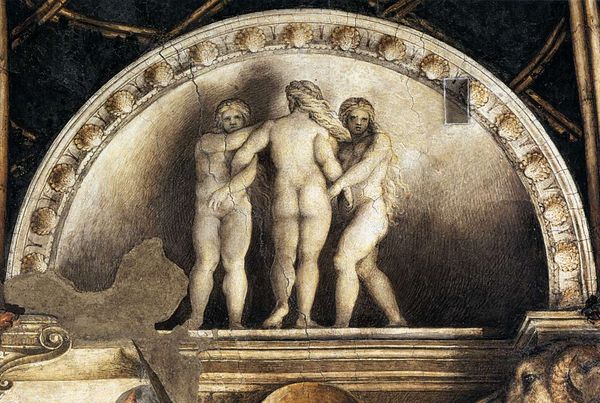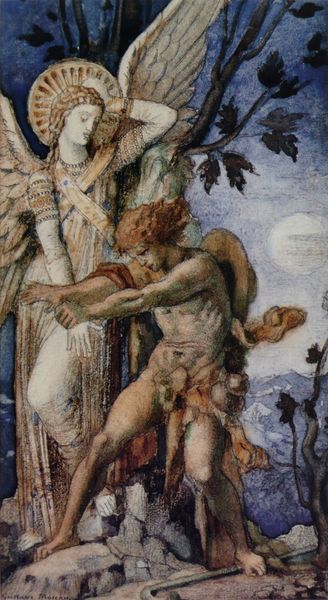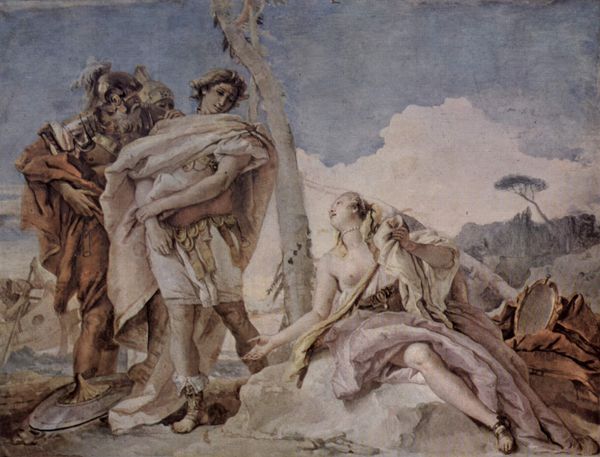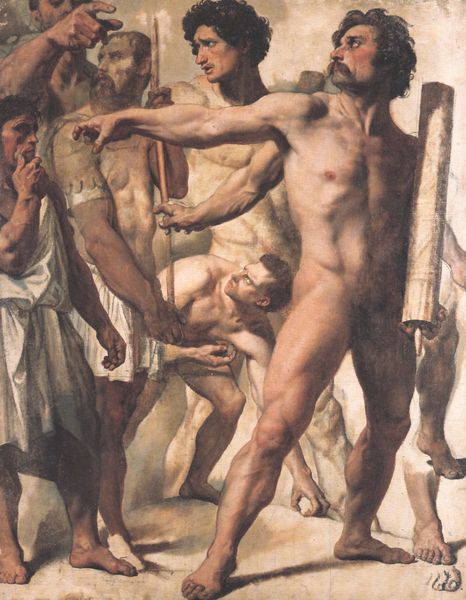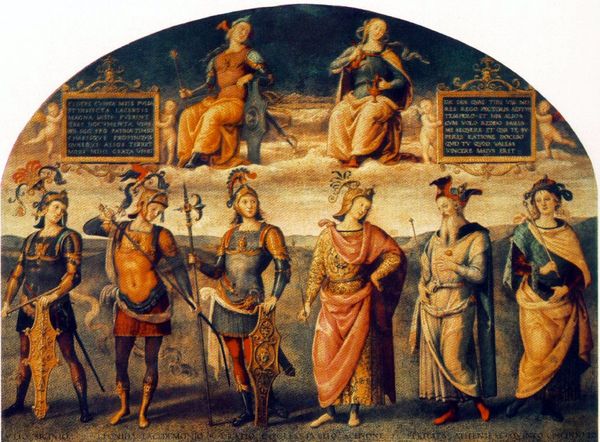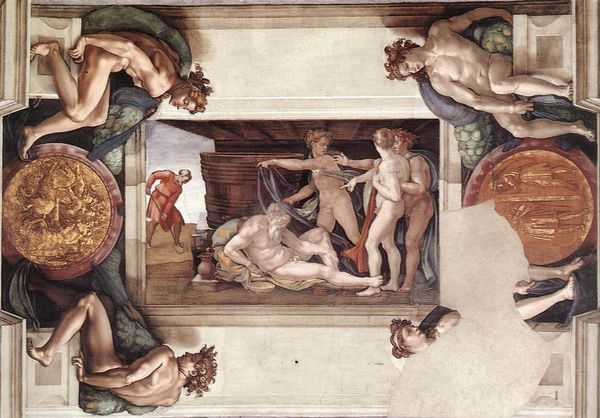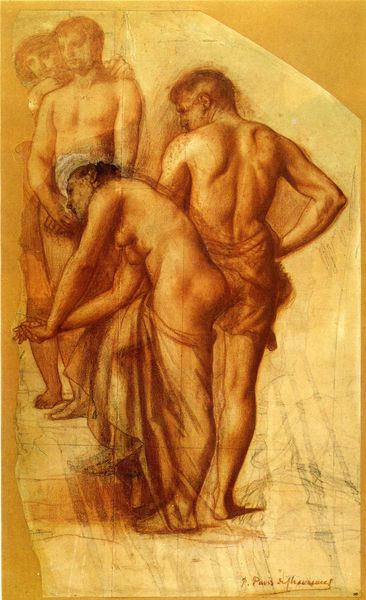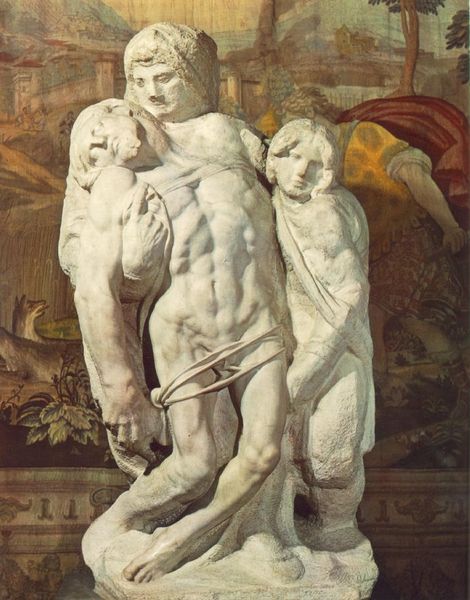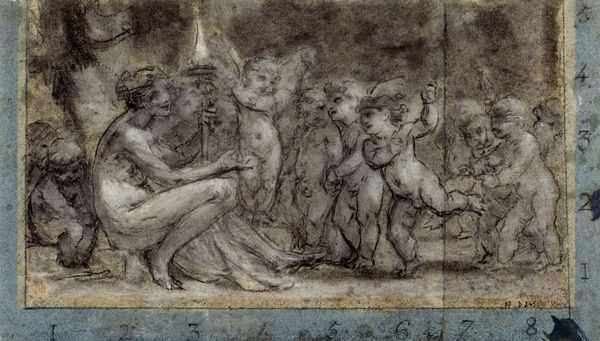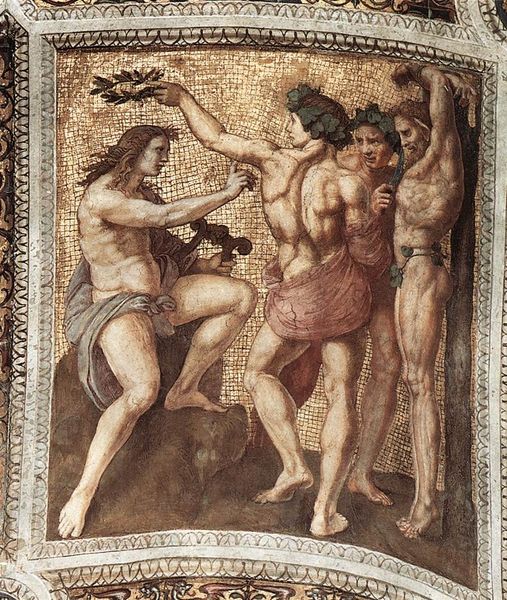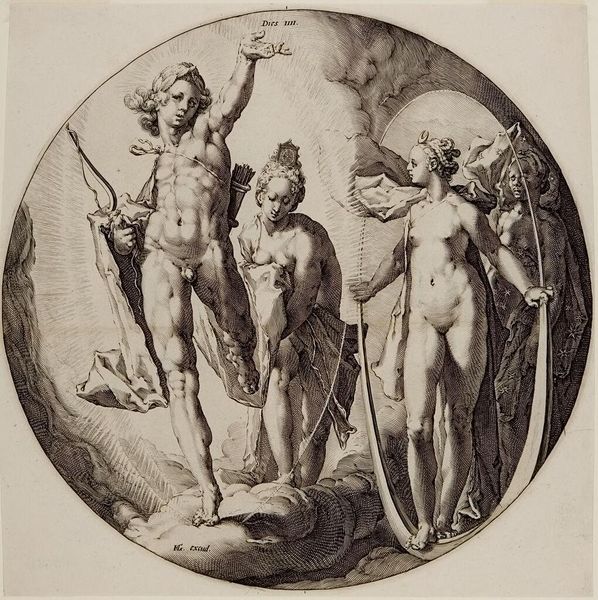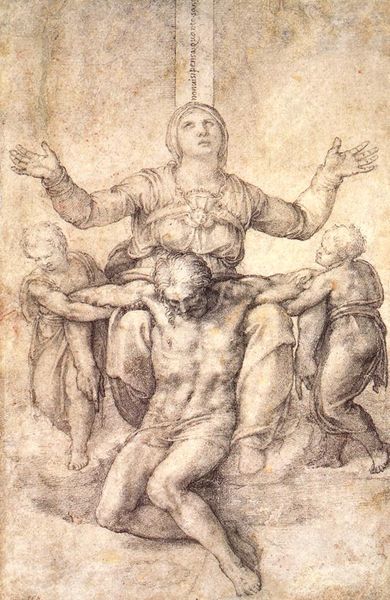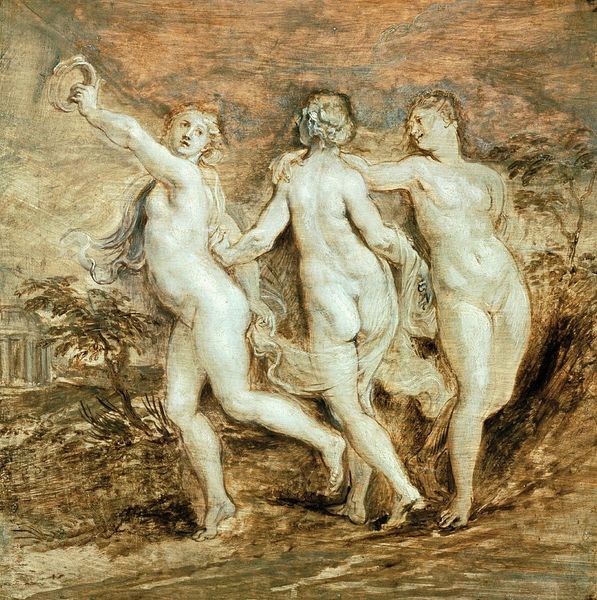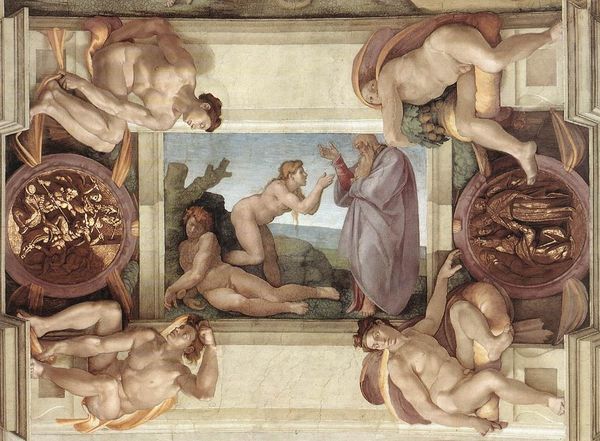
drawing, oil-paint
#
drawing
#
oil-paint
#
charcoal drawing
#
figuration
#
11_renaissance
#
oil painting
#
roman-mythology
#
mythology
#
history-painting
#
charcoal
#
italian-renaissance
#
nude
Dimensions: 364 x 317 cm
Copyright: Public domain
Editor: Here we have Andrea Mantegna’s “Three Deities,” created around 1500, in oil paint and drawing. It's held at the British Museum in London. The figures are striking, but they seem almost bleached of color, giving the whole scene a solemn air. How do you interpret this work? Curator: This piece speaks volumes about the Renaissance's engagement with classical mythology and its impact on gender and power dynamics. Looking at these figures, we aren’t just seeing depictions of deities, but also representations of societal ideals and power structures as conceived at the time. Editor: Power structures? Could you expand on that? Curator: Consider who these deities might be and how they are portrayed. Their nakedness, their poses… Are they empowering, vulnerable, or perhaps something more complex? This period often saw a tension between the celebration of the classical body and the imposition of contemporary social norms. It’s fascinating to think how Mantegna, in choosing these deities, also chose to highlight or perhaps even challenge prevailing gender roles of the time. Do you notice how each of them holds distinctive attributes or symbols of their identity? Editor: Now that you mention it, I see the one in the center appears more dominant, holding a spear. Curator: Precisely. How does that imagery resonate when considering questions of gender, authority, and even the legacies of colonialism so entangled within collections of the British Museum itself? Considering artworks as active participants in cultural discourse, instead of mere historical objects, gives us insight on the Renaissance’s legacy. Editor: It’s incredible how much these figures from so long ago still have to say about us today. Thanks for pointing that out, Curator! Curator: The Renaissance was a complex period. Examining how art reinforced or questioned the prevailing narratives remains crucial to understanding ourselves.
Comments
No comments
Be the first to comment and join the conversation on the ultimate creative platform.
